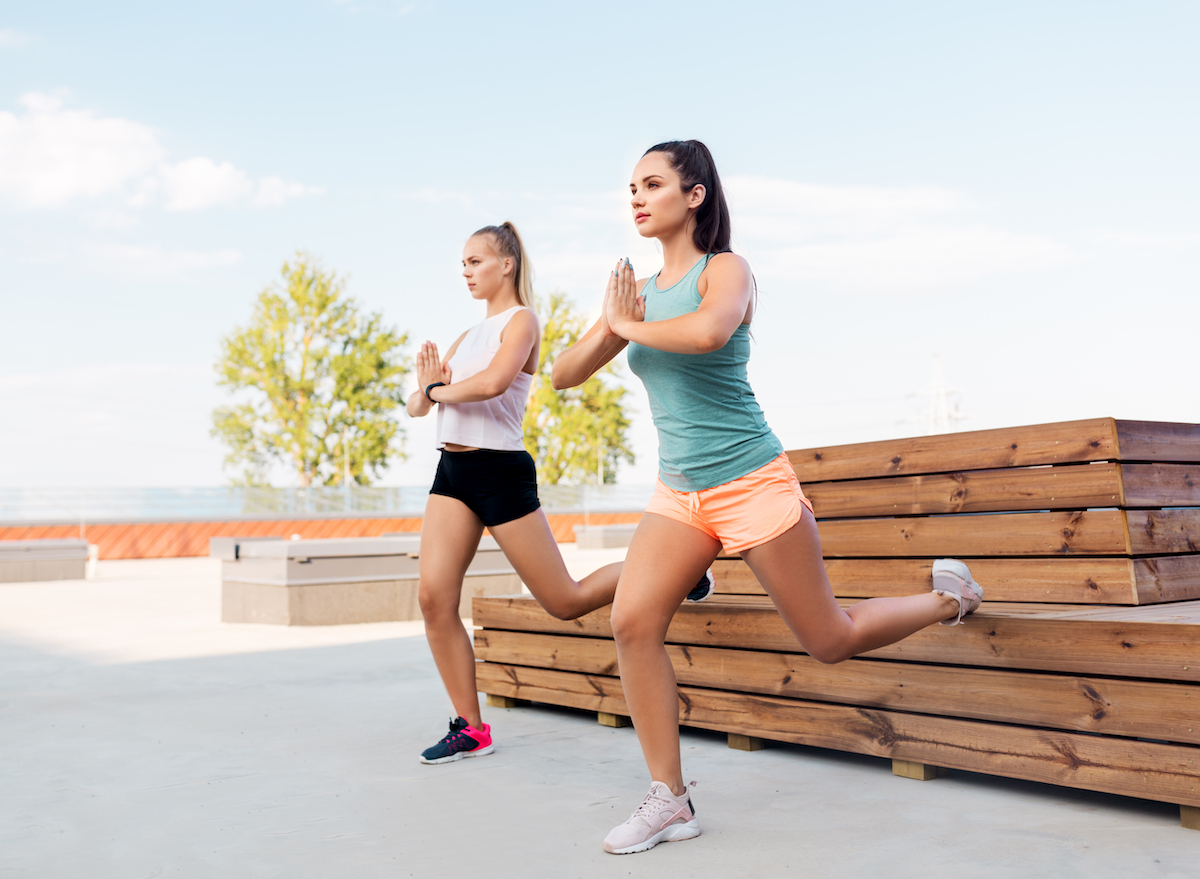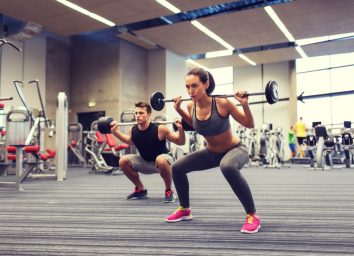You Shouldn't Skip Exercise if You're Older Than This Age, Says Science

You might think of aging as something that's far off in the future. But there are some parts of the aging process that begin sooner than you'd think. Take sarcopenia, aka the age-related loss of muscle mass—which starts in your 30s. (Yikes.)
There are a few factors that may cause sarcopenia, according to a 2018 review in the journal Biogerontology. These may include the slowing of protein synthesis, inflammation, fewer satellite cells (which help muscle cells regenerate) and the "infiltration of fat tissue and connective tissue into skeletal muscle," the study authors write. Inactivity can also affect muscle mass—basically if you don't use it, you (temporarily) lose it. Per Harvard Health, you can lose as much as 3% to 5% of your muscle mass per decade.
Losing muscle mass isn't just an aesthetics thing, either. Having weak muscles can affect your overall strength and ability to do day-to-day activities. It also increases your risk of injuries and falls, especially as you get older. According to a 2020 study published in the journal Nature, sarcopenia is associated with the development of cardiovascular disease and osteoporosis, and can affect the mortality of people over age 65.
Luckily, the loss of muscle doesn't have to be inevitable. You can stave off sarcopenia just with some regular exercise—specifically, with strength training. Lifting weights or doing bodyweight exercises is ideal for combatting age-related muscle loss because it's the best way to build up muscle and bone. "Weight training strengthens not only your muscles but also your skeletal system," Michael R. Deschenes, PhD, FACSM, a professor of kinesiology and health sciences and the chair of Kinesiology and Health Sciences at The College of William & Mary, and a fellow with the American College of Sports Medicine, previously told ETNT.
So while you should exercise at every age—for your body, for your health, for your lifespan—if you recently celebrated your 30th birthday or you're older, the leading science says that it's worth your while to take strength training seriously ASAP. Here are some science-backed tips to help you get started—and make the most out of every workout. And for more exercise smarts, be sure to read: One Secret Reason You Need to Walk More Starting Now, Says Science.
Strength train at least twice a week

According to the Centers for Disease Control and Prevention (CDC), adults should dedicate at least two days a week to strength training. (This is in addition to 150 minutes per week of moderate-intensity exercise.) You don't have to become a hardcore Crossfitter to see benefits—just lifting some dumbbells a few times a week can make a difference. Read more: New Study Reveals the Side Effect of Lifting Weights Just 2 Times Per Week.
Build muscle with full-body moves

#LegDay and #ArmDay might be trendy on social media, but you get the most bang for your buck with full-body, compound moves that work multiple muscle groups at once. (Think squats or shoulder presses rather than bicep curls.) A 2019 study in The Journal of Strength and Conditioning Research found that men who did five full-body workouts a week had thicker muscles than men who broke up their workouts by muscle group. Looking for ideas? Check out: Do This Simple 10-Minute Workout for a Lean Body Fast, Says Trainer.
Add 2 seconds to every rep

Want to build muscle faster? Try making every rep just a few seconds longer—specifically, the lowering phase. A 2016 study found that people who added two seconds to their time lowering a weight down during a bench press made the entire move more effective. This technique maximizes your "time under tension" (TUT), which is how much time you work a muscle during a move. "This method is great for exercises where you can't add any more weight, where you find yourself stuck in a dreaded plateau, or you simply want to target certain specific muscles," trainer Tim Liu, CSCS, previously wrote for ETNT. You'll notice gains in no time!
Level up your technique

You can also maximize your muscle gains by adding some more advanced training strategies to your routine. No, I don't mean adding more weights or hiring a trainer (unless you want to, of course). I'm talking more about your weight-lifting technique. A new 2021 study in the journal Sports Medicine looked at lots of research to put together recommendations for a super time-effective strength-training regimen.
One of their tips: "Advanced training strategies… roughly halves training time compared to traditional training, while maintaining training volume." They say you can get the same gains in less time by doing things like supersets (doing two sets of exercises back-to-back with no rest in between them) drop sets (where you do a move over and over until you're exhausted), and rest-pause training (pausing between every rep). Add these strategies to your training days and reap the rewards. Read more: Secret Side Effects of Exercising Just 30 Minutes a Day, Says Science.








